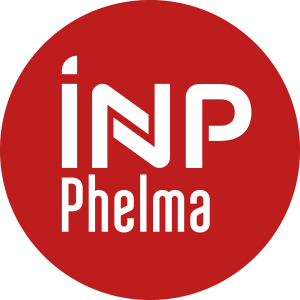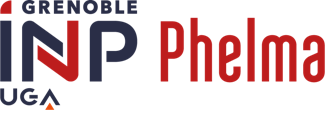Number of hours
- Lectures 20.0
- Projects 0
- Tutorials 10.0
- Internship 0
- Laboratory works 0
ECTS
ECTS 3.0
Goal(s)
This courses aims at using the knowledge previously acquired in quantum physics, solid state physics and electronic devices physics to describe the interactions between electrons and photons in a semiconductor. Spontaneous and stimulated emissions are described as well as absorption. Then the behaviours of the devices based on these three physical phenomena are described. Therefore, LED, photodiodes, photoconductors and laser diodes are studied.
Contact Lionel BASTARD, Jean-Emmanuel BROQUINContent(s)
Here is the outline of the course
1) Introduction
2) Spontaneous emission
2.1) Direct and indirect transitions
2.2) Spontaneous emission rate - optical joint density of states
2.3) Emission spectrum
2.4) Quantum efficiency
3) LEDs
3.1) Principle of operation
3.2) Output power vs injected current
3.3) Frequency response
3.4) Real devices
4) Absorption stimulated emission
4.1) Dipolar transition matrix element
4.2) Absorption coefficient at thermal equilibrium
4.3) Carrier injection and optical gain
5) Photodetectors
5.1) context
5.2) carrier distribution in a photo-excited semiconductor
5.3)Photoconductors
5.3.1) principle of operation
5.3.2) responsivity
5.3.3) sensitivity
5.3.4) bandwidth
5.4) lPhotodiodes
5.4.1) principle of operation
5.4.2) responsivity
5.4.3) sensitivity
5.4.4) bandwidth
6) Laser Diodes
6.1) principle of operation
6.2) threshold current
6.3) output power
6.4) emission spectrum
6.5) direct modulation
Prerequisites
Microelectronic device physice, notions of geometric and wave Optics, fundamentals of solid states and quantum physics.
the assessment is carried-out through an open-book exam (2h)
Contrôle continue : CC
Examen écrit Session1 : DS1
Examen écrit Session 2 : DS2
N1 = Note finale session 1
N2 = Note finale session 2
En présentiel :
N1 = % max(TdE, CC) + % DS1
N2 = % max(TdE, CC) + % DS2
En distanciel :
N1 =
N2 =
Commentaire :
General:
Saleih and Teich : Fundamentals of Photonics (Wiley and sons)
Solid State Physics :
C. KITTEL : Introduction to solide state physics (6th edition Wiley and sons)
G. BUSCH, H. SCHADE : Lecture on solide state physics (Pergamon)
L. SOLYMAR, D. WALSH : Lestures on the electrical properties of materials (Oxford)
R.E. HUMMEL : Electronic properties of materials (Springer)
A. W. ASHCROFT, N. D. MERMIN : Solid state physics (Holt Saunders)
Semiconductor physics :
S. M. SZE : 1- Semiconductor devices : Physics and technology (Wiley)
2- Physics of semiconductor devices (Wiley)
3- High speed semiconductor devices (Wiley)
M. SHUR : Physics of smeconductor devices (Prentice Hall)
R.A. SMITH : Semiconductors (Cambridge)
K. SEEGER : Semiconductor physics (Springer)
C. WOLFE, N. HOLONYAK, G. TILLMAN : Physical properties of semiconductors (Prentice Hall)
Optoelectronics :
« Broadband »
A. YARIV : Optical electronics (4th ed Saunders)
B. A .SALEH, M.C. TEICH : Fundamental of Photonics (Wiley)
K.J. EBELING : Integrated optoelectronics (Springer-Verlag)
D. WOOD : Optoelectroni semiconductor devices (Prentice Hall)
« Focused »
H.C. CASEY, M.B. PANISH : Heterostructure lasers (vol A and B) (Academic Press)
B.R. MROZIEWICZ et al. : Physics of semiconductor lasers (North Holland)
H. KRESSEL, J. K. BUTLER : Semiconductor lasers and heterojuncitons LED (Academic Press).



